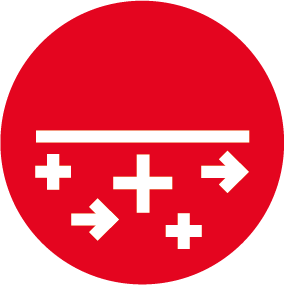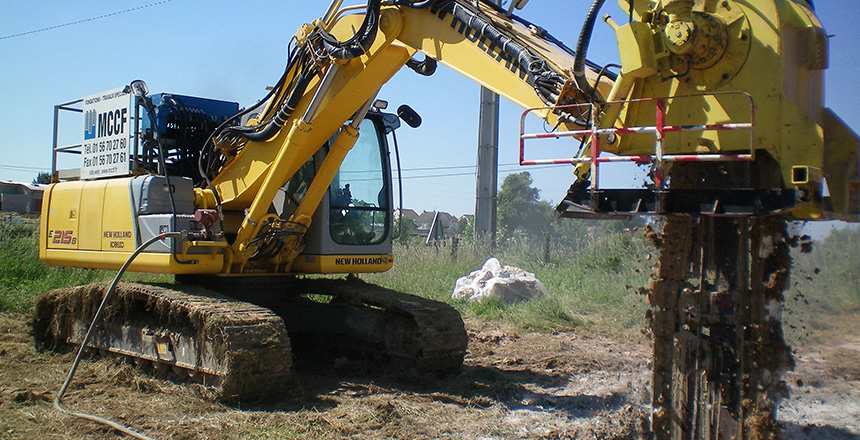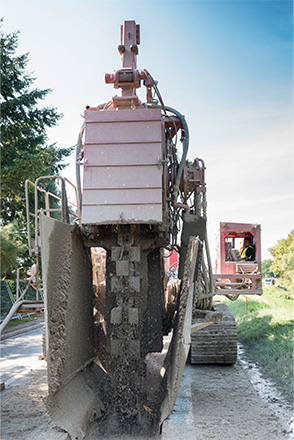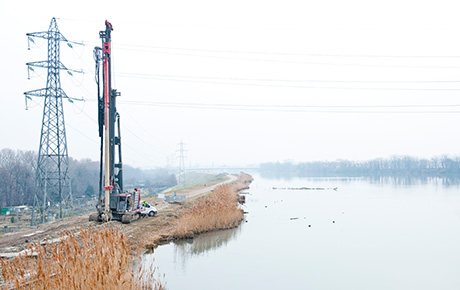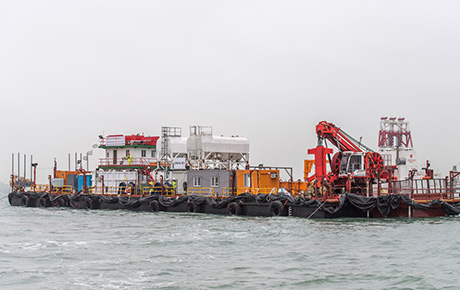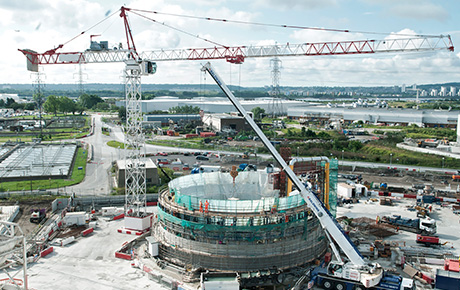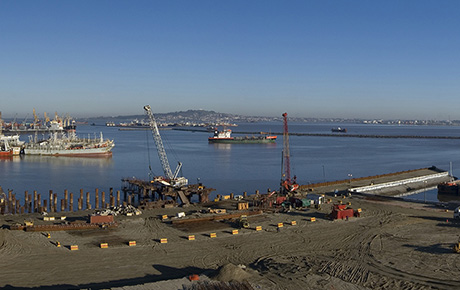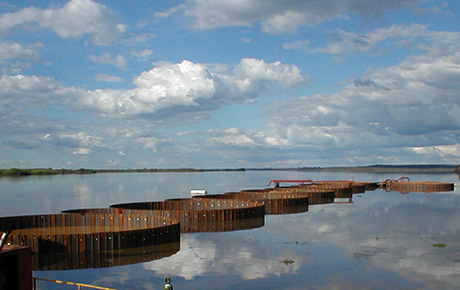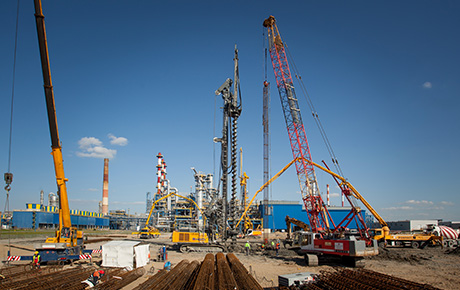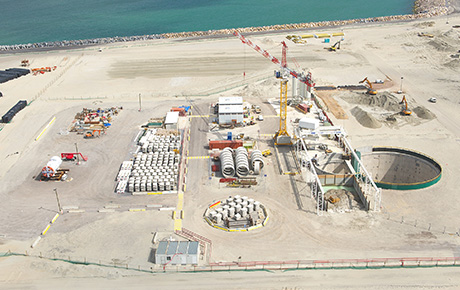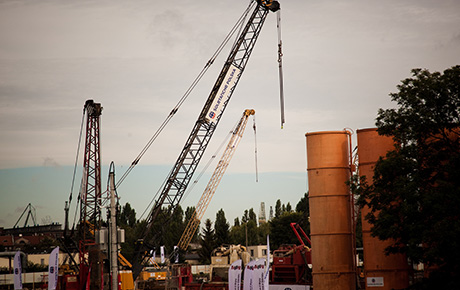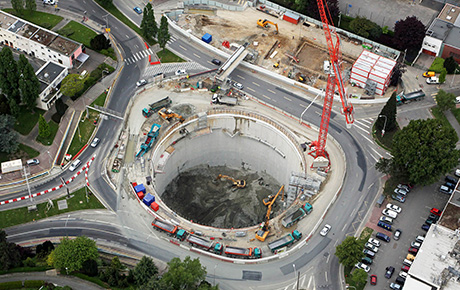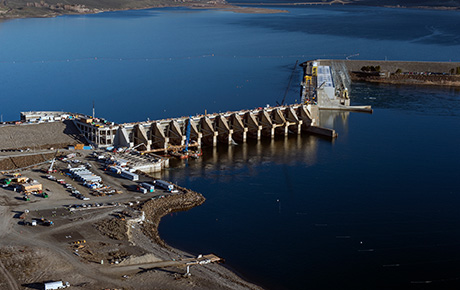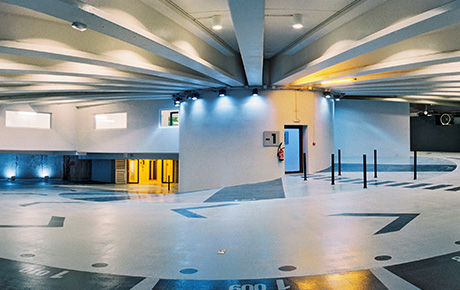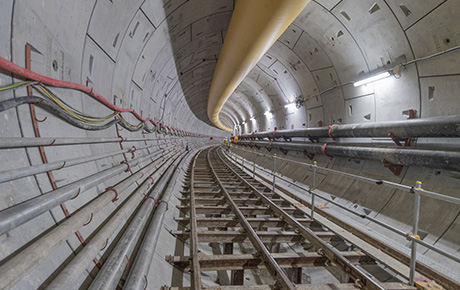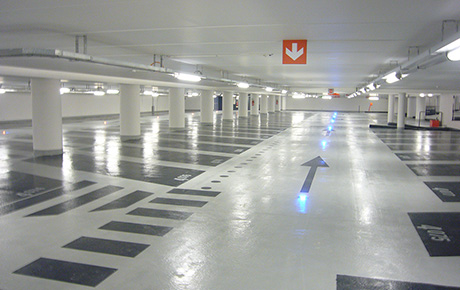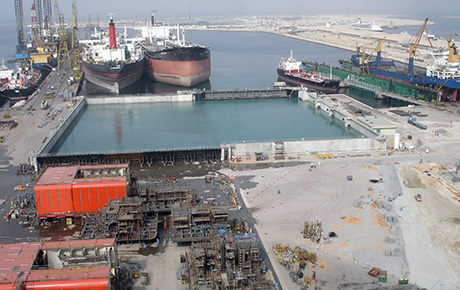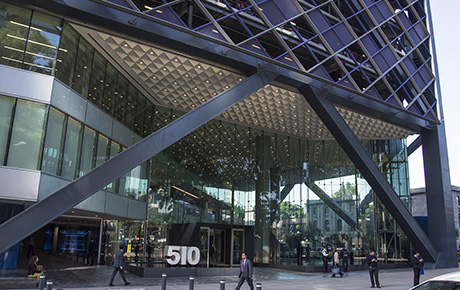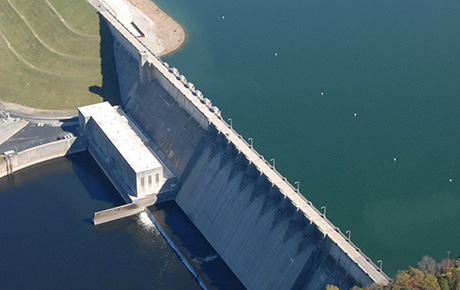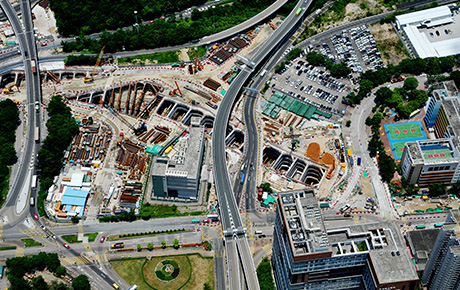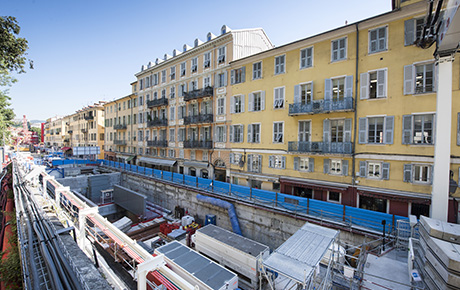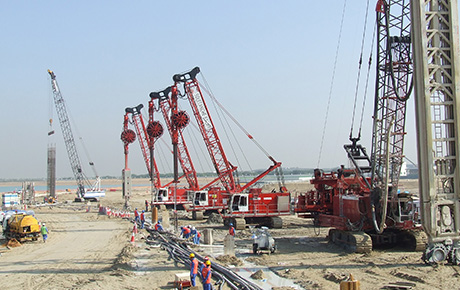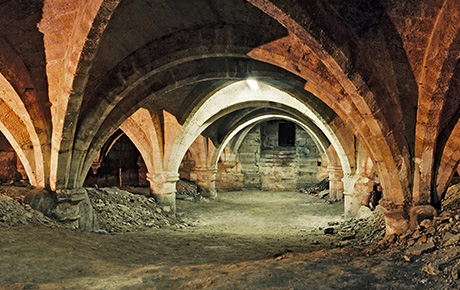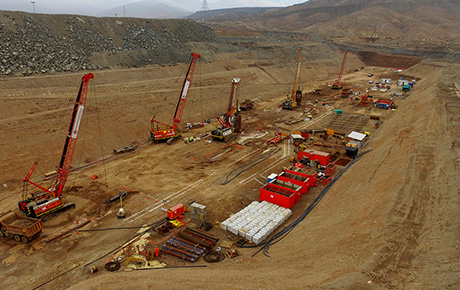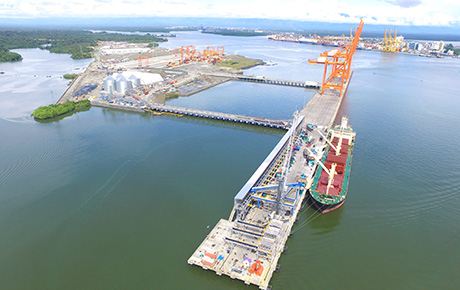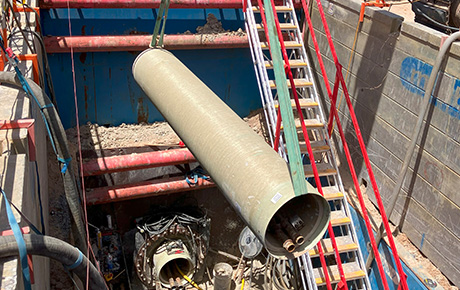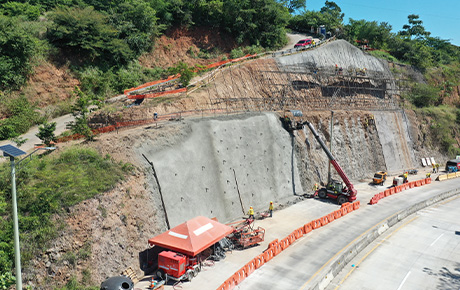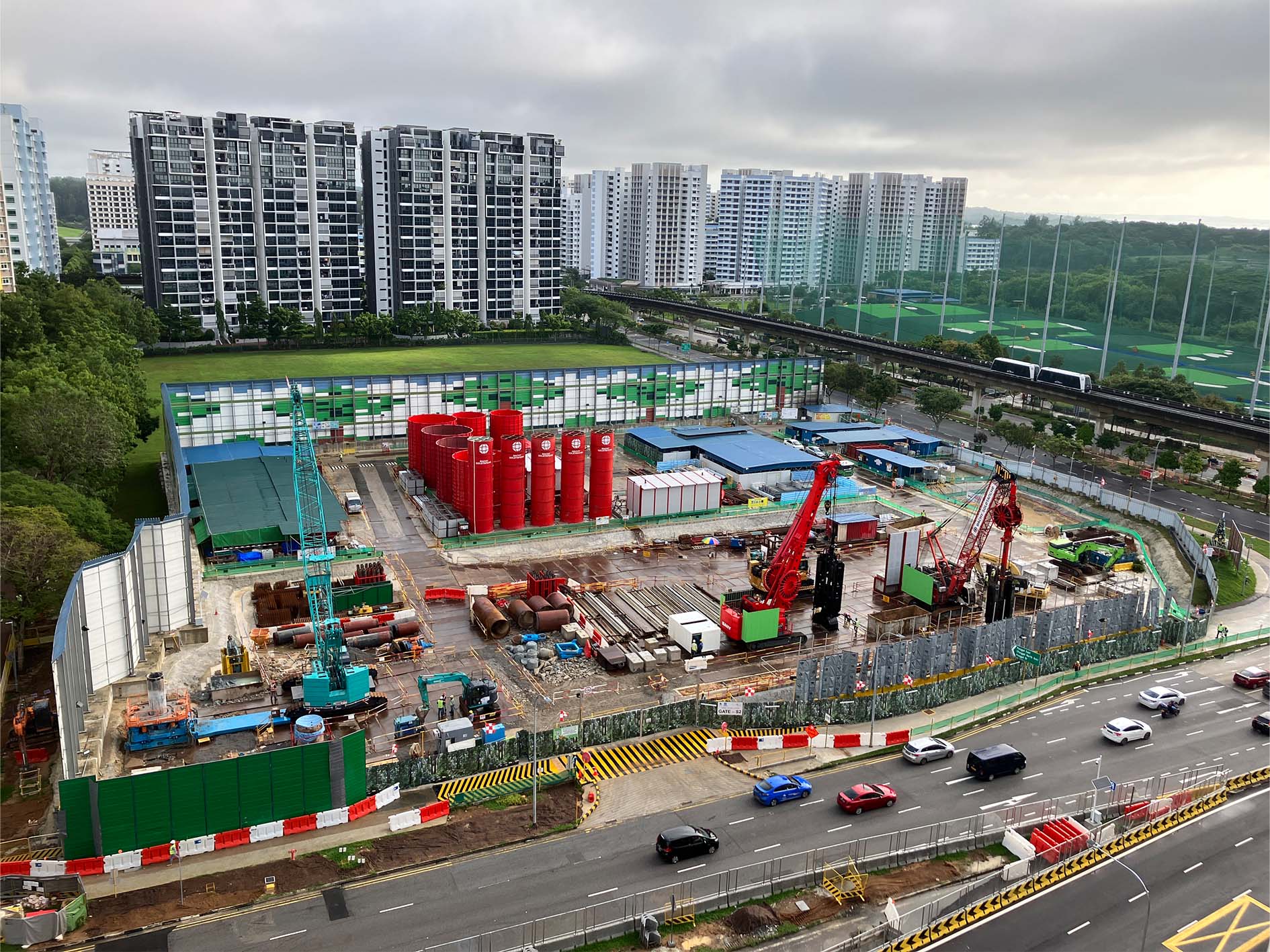Project Description
Cost effective continuous walls, and a lot more!
The Trenchmix® process is a very effective solution for cut-off walls but can also have many other uses. Find out more about Soletanche Bachy Deep Soil Mixing offer.
What is Trenchmix® ?
Trenchmix® is a Deep Soil Mixing process that produces continuous trenches of soil mixed in situ with a binding agent.
This binding agent can simply be cement, or a blend of cement with other products such as lime, fly ash or slag.
Soil-cement mix trenches are created using a specially adapted trenching machine designed to:
- Extract very little volume of in situ soil
- Be capable of incorporating the binder by dry or wet method
- Mix the soil in-situ with the binder on full height of the blade.
The Trenchmix® process creates in-situ continuous walls that may be described as lineic (viewed from above) or surfacic (viewed in elevation). When used alone, a continuous Trenchmix® wall can be used for cut-off application. Once structurally reinforced, a Trenchmix® wall can form a retaining structure which can be used as support of excavation. When used as a network of parallel or secant trenches, Trenchmix® walls can be used for soil improvement applications.
The soil-cement mixture can achieve an average compressive strength of around 3 MPa and hydraulic permeability valuesbelow 10-6 cm/s.
Wall dimensions
Wall thickness corresponds to the width of the blade used: between 350 mm and 500mm
Wall depth is governed by blade length.
What are the Trenchmix® applications?
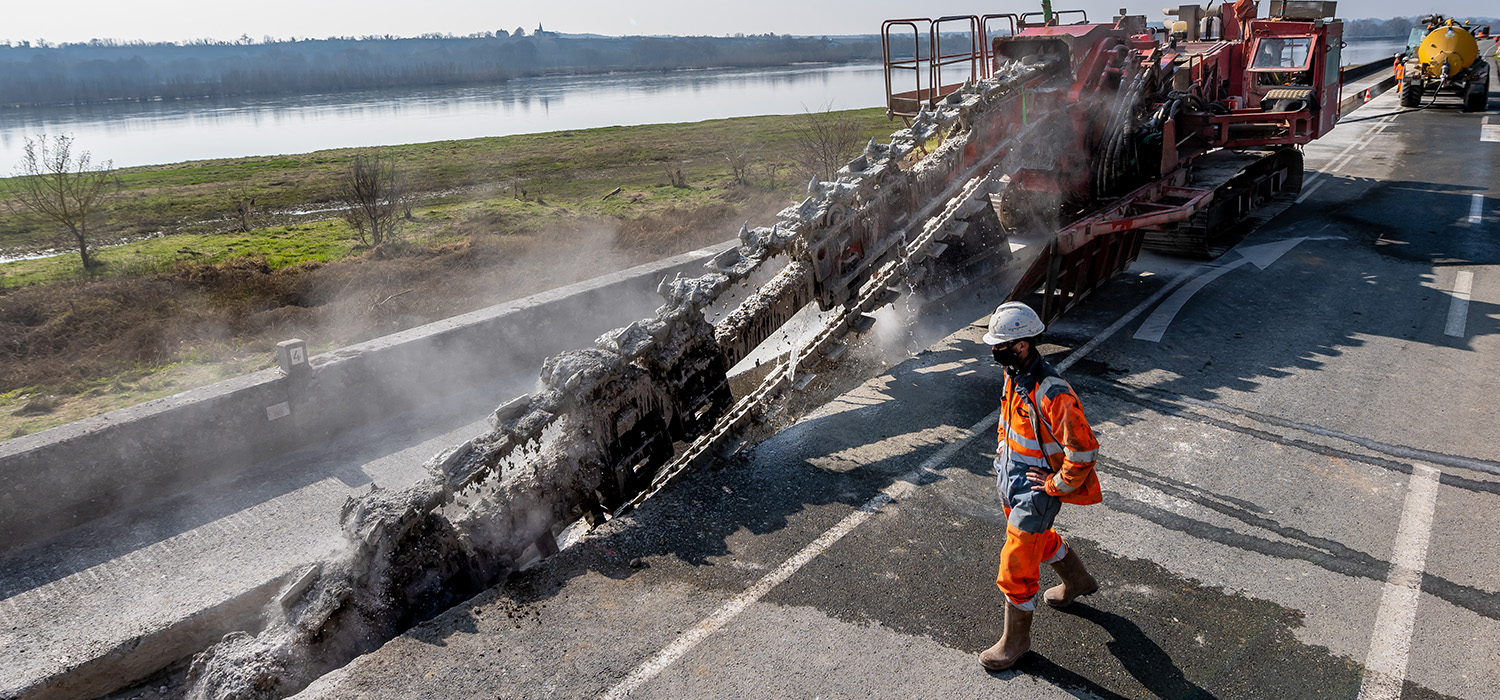
What are the advantages of this technique?
Very good erosion resistance
Excellent final hydraulic permeability. Better than a bentonite cement wall
Not particularly environmentally intrusive
Continuous, seamless treatment
Compatible with low headroom conditions
Fast and efficient process
Soil-cement mix l is homogenous on full height of the trench
When in operation, generates no vibrations on nearby existing structures
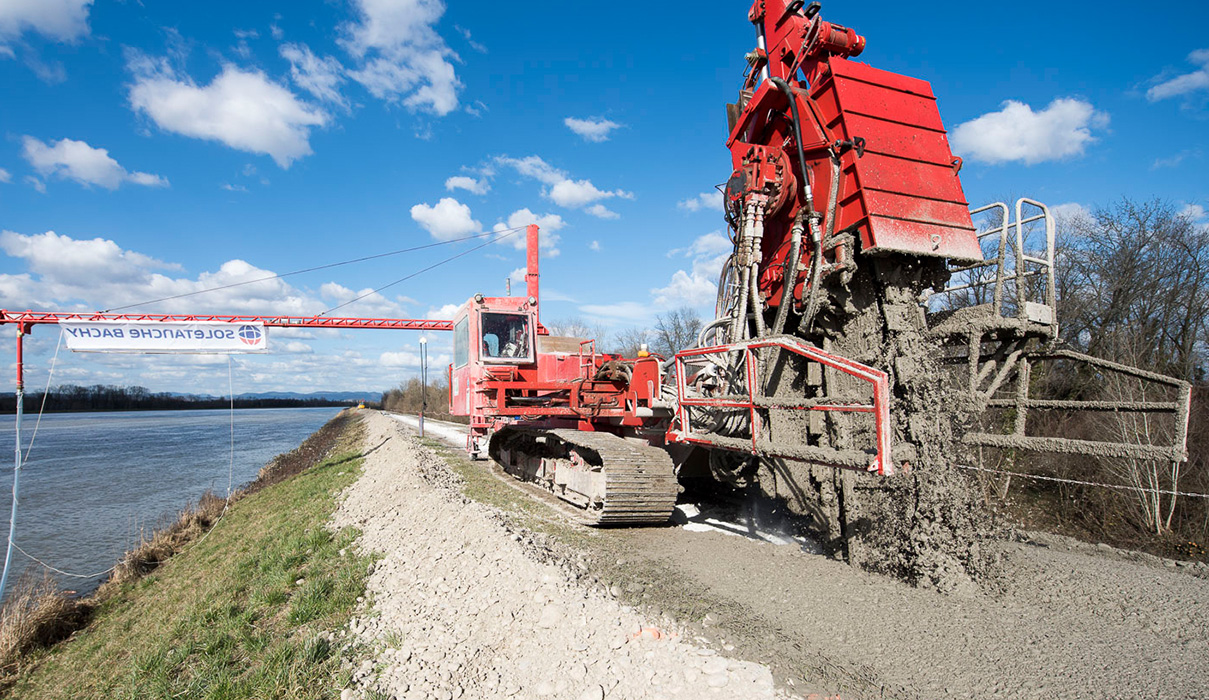
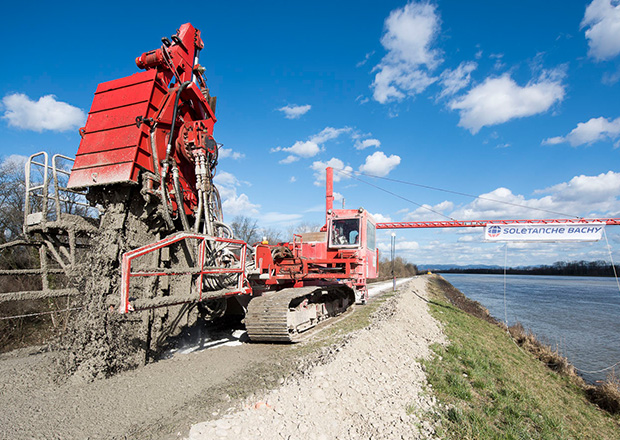
How to use Trenchmix® ?
This process offers a choice of two techniques. That choice will be determined by the nature of the soil, the type of work to be carried out and the moisture content of the soil.
The binder is introduced in the form of a liquid made of binder and water
- Pre-trench on the platform to control a the spoil outflow
- Grout is prepared in a batching plant and pumped to the trencherThe in situ soil is destructurated while binder is introduced to form the mixture.
- Mixing is brought by the action of several blades passing at high velocity inside the mixture.
The binder is introduced directly into the trench in powder form
- The platform is pre-trenched to:
- Receive the binder
- Control the spoil outflow
- Binder is first introduced in the pre-trench.
- When passing afterwards, the blade of the trencher destructurates the soil while incorporating the dry binder. An addition of water can be made when needed. Mixing is brought by the action of several blades passing at high velocity inside the mixture.
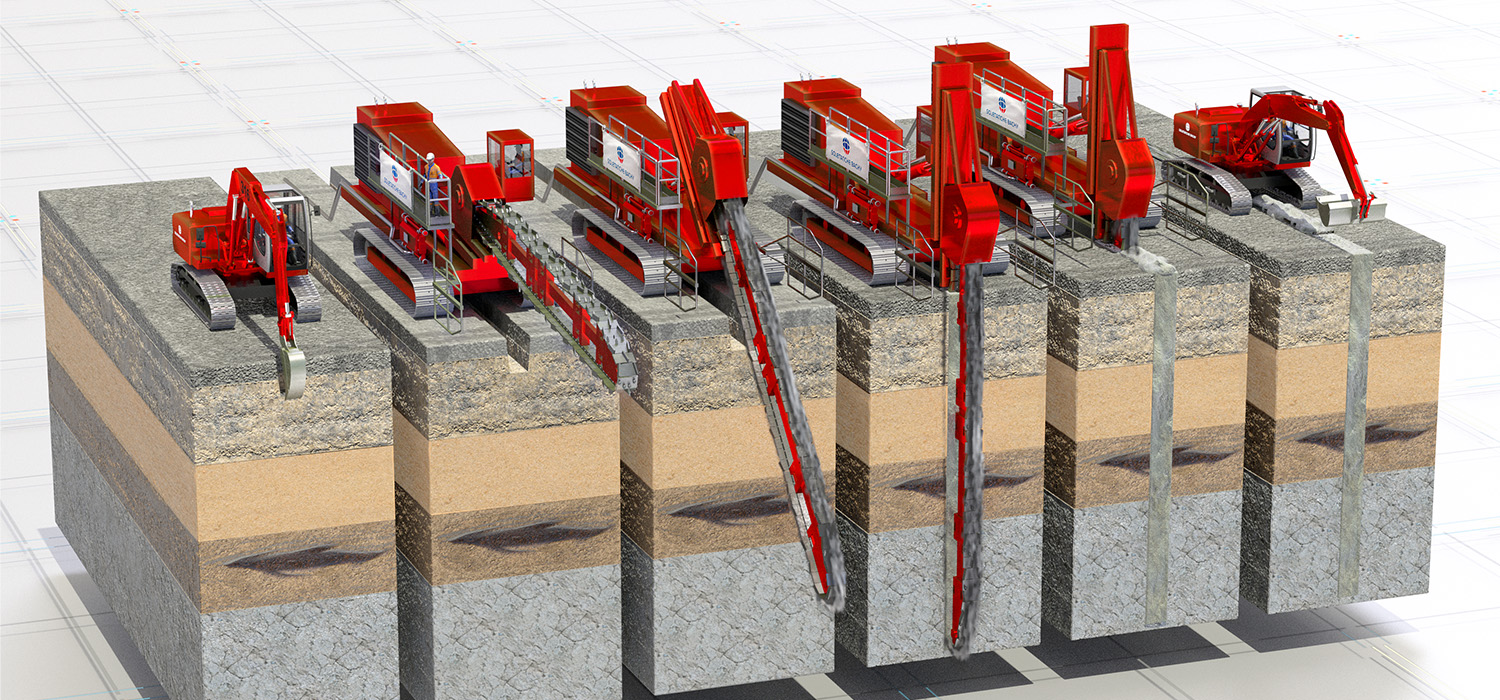
Soletanche Bachy’s advantages
Execution controls and monitoring
- Wet method: checks on the properties and composition of the cement grout
- Dry process: quality control of the cement used
- Continuous monitoring of tool positioning
- Profile tracking with depth adjustment where necessary
- Properties of the soil-cement mixture are checked by wet grab samples
- A dedicated supervisory system provides simultaneous real-time checking of soil/binder homogeneity and the quantity of binder injected
Did you know ?


